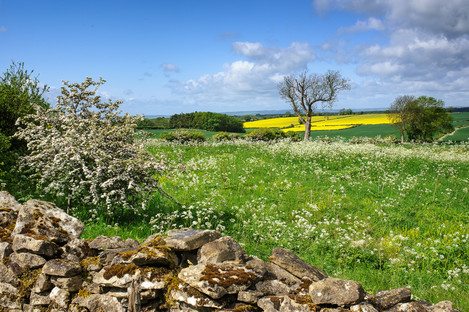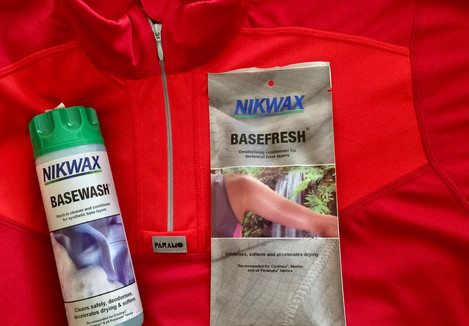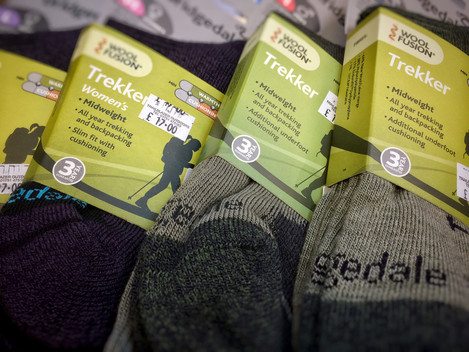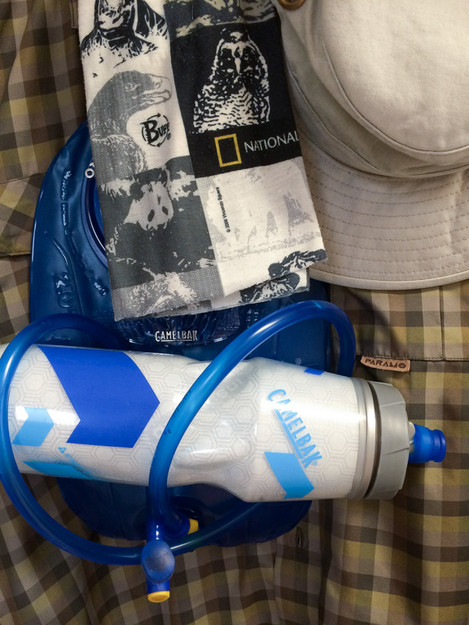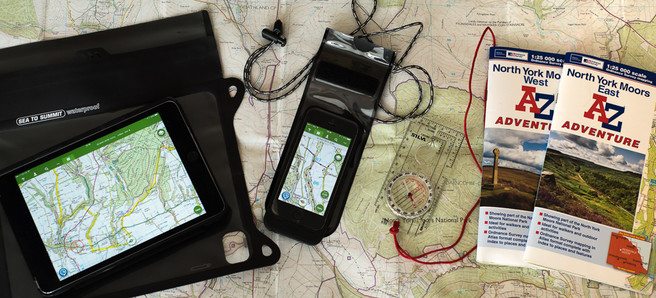Outdoor kit for Spring

John Clifton
My photography began at my father's side - he processed and printed his own pictures to save on costs, so I did the same. I still hope to ‘dust off’ my darkroom gear at some point, but have spent the last few years learning to make great digital prints. I love the convenience that digital offers, and the immediate visual feedback it provides, but it is still that final analogue print that really ex-cites me. When not working at Trailblazer Outdoors, in Pickering, I am usually out walking the fabulous land-scapes of the North York Moors National Park. This is a place I find endlessly inspiring, offering a huge variety of scenery and subjects in a compact and accessible package. I am also co-organiser of #MOORSVIEW - a bi-annual photography seminar addressing landscape and wildlife photography on the North York Moors and Coast.

Neil Armstrong
Trailblazer Outdoors and Scarborough & Ryedale Mountain Rescue Team.
Welcome to the final part of our series giving advice for outdoor photographers looking to cope with the demands of each season. This part is by way of a round-up of some of the key points from previous articles - which focused on sun protection and hydration in summer, water-proofing and flexibility in autumn, insulation and snow preparedness in winter.
Year round essentials
This month’s temperature differences - of more than 10 degrees between one day and the next -have demonstrated the weather’s continued ability to surprise. However, the seasonal variations - at least in the UK - are much less marked than they used to be. Excepting occasional extreme weather incidents, the Country has largely moved into a more even tempered ‘constantly mild’ condition.
So the current mild, dampish conditions of Spring are not a bad guide to what to expect year round - and kit that copes well now will largely cope throughout the other seasons. This base kit can then be augmented with extra layers or accessories to cover occasional more extreme adventures if required. You will find below our suggestions essential year round equipment:
- Waterproof jacket (breathable membrane lined or Paramo style - see below for details)
- Water repellant walking trousers (quick drying, stretch fabric for preference)
- Buff neck gaiter (for sun protection and insulation)
- Wide brimmed hat (protects from sun and rain - also be useful for camera protection/sun shading)
- Good quality base layers (see below for advice)
- Lightweight fleece mid-layer
- Walking socks (wool rich for preference, see below for advice)
- Sufficient water to maintain good hyrdration
- Sufficient food to maintain good energy levels
- Torch and spare batteries (we can all get lost at times, and can all find ourselves benighted. Also useful for signalling)
- Emergency whistle (for attracting attention)
- First aid kit (just the essentials but don’t forget any tablets you might need to take)
- Paper map and compass (learn how to use these if you don’t already know)
- Mobile phone or tablet (not to be relied on, but becoming universal)
- Nikwax Tech Wash and TX Direct (for maintaining waterproofing/repellency)
- Let’s take a look at some of these in a bit more detail:
The Base Layer - foundation of an effective system
David Ward asked us at the ‘Meeting of Minds’ conference what Neil and I thought was the one thing anyone should do to improve their outdoor kit. And, other than a regular wash and reproof in Nikwax, we suggested that the simplest change people could make would be to wear a decent technical base layer rather than your favourite old cotton t-shirt.
Being comfortable out of doors - especially when you are carrying some weight on your back - starts with moisture management. A good base layer is designed to wick sweat away from your skin - keeping you dry, and thereby warm. They need not be expensive - although if you have a taste for Merino Wool, you will need deep pockets..!
Personally, we wear a range of base layers - long or short sleeve, zip neck or crew, thicker for winter, thinner for Summer - all made largely from man-made fibres. I like the fit and feel of the latest version of Paramo’s Cambia range, although I am also still wearing some tops from their original iteration that must be over 15 years old by now. At around £50 for a long sleeve zip neck, these will sound pricey to some. But if you treat them well they will last a very long time - so ‘buy once, buy well’ is the motto, just as with photographic equipment.
If you are already kitted out with a full range of technical base layers, think about giving them a little loving care. We know that they often get thrown in with the other washing - perhaps getting a dose of fabric softener for good measure..! This will leave residues behind on the surface of the fabric that will reduce its wicking power, and cause it to hold on to moisture rather than letting it disperse.
So if you think your trusty old tops are beginning to lose their magic powers of moisture management, treat them to a wash in Nikwax’s Basewash. This revitalises the wicking properties of technical fabrics - returning them to their former glory. You can also now buy Basefresh - which you can use on mixed washing loads as a substitute for ordinary fabric softener. It may not provide quite the floral fresh smell that you are used to, but it does perform the same magic re-vitalising job on your technical clothing.
Outer layer options…
As has been discussed before, there are a lot of options for waterproof jackets - and trousers for that matter. Membrane lined jackets provide waterproofing with some level of breathability, and if you are simply going to a location and staying put they can be a reliable option. The shell jacket itself is unlikely to have much warmth though - hence the suggestion of a mid layer to go underneath.
Personally, most of my photography is made whilst out on a walk - which means I will be expending effort carrying the kit in the process. In these situations we have found over the years that membrane lined jackets tend to ‘wet out’ - meaning that you build up more heat and moisture inside than the membrane can cope with, leaving you sweaty and uncomfortable. Our preferred solution is to wear Paramo non-membrane lined waterproof gear instead - which is more breathable, whilst also being inherently insulative - largely removing the need for a mid layer.
With the arrival of warmer spring weather, I also favour Fjallraven trousers and jackets - particularly the lightweight Abisko range. These can be waxed to make them water repellant, or left unwaxed to maximise breathability. Paramo also make a similar range of clothing, with the Halcon Traveller Jacket being a favourite of mine as it features many, many usefully sized pockets for filters and holders, light meters, cable releases, and other bits and bobs
The joy of a good walking sock…
Once you start wearing walking socks they spoil you for alternatives - I hate it when I have to wear ‘smart dress socks’ instead, as they are just so uncomfortable by comparison. Good walking socks tend to use a reasonable level of wool in their construction. The reason for this is that wool fibres have a hollow core - which acts as a store for moisture wicked away from your foot.
The moisture is gradually dispersed to the outside world, leaving your foot warm but relatively dry - which is half the battle in avoiding blisters. Having tried many brands over the years, our favourite at Trailblazer Outdoors are from Bridgedale - whose socks generally feature Merino or Pure New Wool, spiral wound with man-made fibres for added strength and breathability.
At around £16 a pair they may again seem expensive. But again they last a long time if you look after them well - some of mine are just being retired after 10 years of use. Nikwax again makes a dedicated Sock Wash that will keep your walking socks in good condition, but the main message is to wash them on a cool cycle and let them dry naturally. An occasional drop of olive oil in the final rinse can also help to keep the fibres in good condition.
And on the topic of oil, we have over the last few years been using ‘Stride Out’ foot oil. You rub this on to your feet just before you put your socks on, and it seems to help prevent blisters and other sores. The oil probably also helps to keep your socks in good order at the same time..!
Additional kit and other considerations…
You will find a range of suggestions in the previous articles for specific bits of additional kit we find useful at different times of the year. But I would put out a plea for a set of walking poles to be added to your year-round essentials - particularly for anyone who regularly covers some distance on foot to reach their photographic locations. Quite apart from the health benefits of taking the strain off of joints and giving you an upper body workout, poles can really help with stability if you are carrying heavy equipment on your back. They also help you to go further, increasing your stamina for more extended exploration of the landscape.
And I would finish with a gentle reminder that mobile technology - wonderful though it is - is not the be all and end all of navigation, or communication. Mountain Rescue services have gone on record recently highlighting reliance on mobile phones as a key factor in many of the call outs they have to deal with. Indeed many of the wild places that we love to explore have no mobile coverage - good thing too, many will say..!
So do buy an old fashioned map if you are planning an extended trip out - screens just can’t give you that extended overview that you get from a traditional paper map. Then learn how to use a compass and grid references with it, and plan your route in advance - including escape routes in case something goes awry. Finally, tell someone else where you are going - it makes such a difference if search teams at least have some idea where to start looking for you..!
Using mobiles responsibly...
If you must rely on a mobile phone for navigation, invest in a mapping app like Viewranger - which downloads the map data in advance to your phone. Then you won’t need a mobile signal for the phone to mark your position on the map - just the more universally available GPS signal. Viewranger even has a feature that can access the camera on your phone to help you identify particular hills and other landmarks as you look at them.
Many of the more recent Ordnance Survey Maps - including OL26 and OL27 covering our beloved North York Moors - also include a code for you to download the map data as part of the purchase price of the paper map. Whilst the free Ordnance Survey App is not as fully featured as some, it does work - showing your position on the map and allowing you to plan routes, and track and record your progress.
And all of this goes along with the same sort of advice you take for granted with your camera kit: take spare batteries, make sure everything is fully charged, turn off mobile data or the phone itself if you are not using it - in order to preserve battery life. Unless you have one of the more recent ‘waterproof’ phones, you probably also want to keep it inside a dry bag - some of which have clear viewing windows so that you can use it without removing it.
In summary
Neil and I hope that readers have found some of our suggestions helpful, and would appreciate any feedback on what we have covered, along with suggestions for other topics people would like to learn more about. In the meantime, we are now both deep into the organisation of the Moorsview 2017 photography seminar.
Moorsview 2017 Photography Seminar
Taking place in Pickering, North Yorkshire, on Saturday 9th September - Moorsview 2017 will feature a range of renowned local photographers speaking about their landscape and wildlife photography. Supported by no less than three exhibitions, and a range of activities to encourage photographers to get out with their cameras, Moorsview 2017 is being staged in support of Scarborough & Ryedale Mountain Rescue Team and local wildlife charities.
You can read more about Moorsview in a future issue of On Landscape, but in the meantime head to the Facebook page / moorsview for further details.


